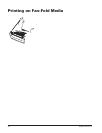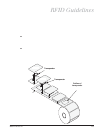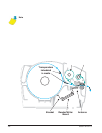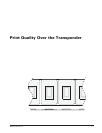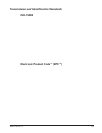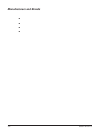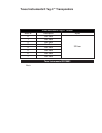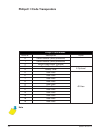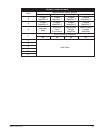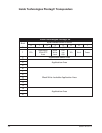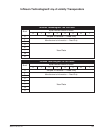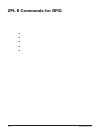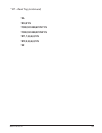
Philips® I•Code Transponders
Philips I•Code transponders are high frequency (13.56MHz) RFID devices.
Each transponder has 512 bits of memory. Data is segmented into 4 byte
(32 bit) blocks that are uniquely addressable for a total of 16 blocks. Each
memory block is lockable using the write protect function during the
writing process. The first two blocks of data (block 0 and 1) are
pre-programmed, non-changeable, and are used for storage of a unique 64
bit serial number. The next two blocks (blocks 2 and 3) are used for storage
of configuration information; block 4 is used for family or application
identification and blocks 5 to 15 are free for user application use.
If you are using these transponders for your own use, and don’t require
universal special function or family codes, then you can program blocks 3
through 15.
Philips I•Code Blocks
Block # Description Bytes
0 Serial Number (write protected)
1 Serial Number (write protected)
2 Write Protect Block (Caution)
3 Special Function Block
8 Optional
4 Family Code
5 User Data
40 User
6 User Data
7 User Data
8 User Data
9 User Data
10 User Data
11 User Data
12 User Data
13 User Data
14 User Data
15 User Data
Note • The bits in block 2 determine the write access conditions for itself and each of
the remaining blocks. You can leave blocks 2 through 15 open or you can
write-protect them. Write-protected blocks (included block 2) can never be written to
from the moment they are locked
32 980476-001A



